Meristematic Tissue
Meristematic tissue is a type of plant tissue that is responsible for cell division and growth in plants. This tissue is found in the growing tips of roots and stems, as well as in buds and developing leaves. It is made up of cells that are small, round, and densely packed together, with large nuclei and thin cell walls. Meristematic tissue is crucial to plant development, as it allows for the continuous production of new cells that can differentiate into other types of plant tissue.
Main types of Meristematic Tissue
- There are two main types of meristematic tissue: apical meristems and lateral meristems.
- Apical meristems are found at the tips of roots and stems, and they are responsible for the elongation of these structures.
- These meristems also produce new cells that will differentiate into other types of plant tissue, such as the vascular tissue that transports water and nutrients throughout the plant.
- Lateral meristems, on the other hand, are found in the cambium layer of stems and roots, and they are responsible for increasing the girth of these structures.
- This is accomplished through the production of new cells that differentiate into secondary xylem and phloem, which contribute to the woody tissue of the plant.
Meristematic tissue, also known as meristem, is a type of tissue found in plants that has the unique ability to divide and differentiate, giving rise to new cells and tissues. These tissues are responsible for the growth and development of plants, as well as their ability to regenerate damaged tissues. There are several different types of meristematic tissues, each with its own unique characteristics and functions.
Meristematic Tissue Diagram
The diagram of meristematic tissue typically shows two types of meristems: the apical meristem and the lateral meristem. The apical meristem is located at the tip of the plant shoot and is responsible for the growth of the plant in length. The lateral meristem, on the other hand, is located in the cambium layer of the plant and is responsible for the growth of the plant in width.
The cells in meristematic tissue are characterized by their small size, thin cell walls, large nuclei, and lack of specialized structures such as chloroplasts, vacuoles, and other organelles. These cells are actively dividing and differentiating into various specialized cell types, such as parenchyma, collenchyma, and sclerenchyma cells.
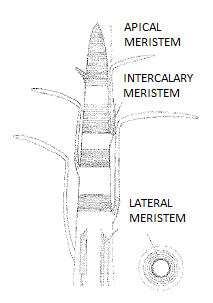
Meristematic Tissue: All Types
Following are the types of Meristematic tissues:
Types of Meristematic Tissue: Apical Meristem
The first type of meristematic tissue is the apical meristem. This type of tissue is found at the tips of roots and shoots and is responsible for the elongation of these structures. The cells in the apical meristem divide rapidly, giving rise to new cells that differentiate into various types of tissues, including leaves, stems, and roots. The apical meristem is responsible for primary growth in plants, which refers to the elongation of the stem and root.
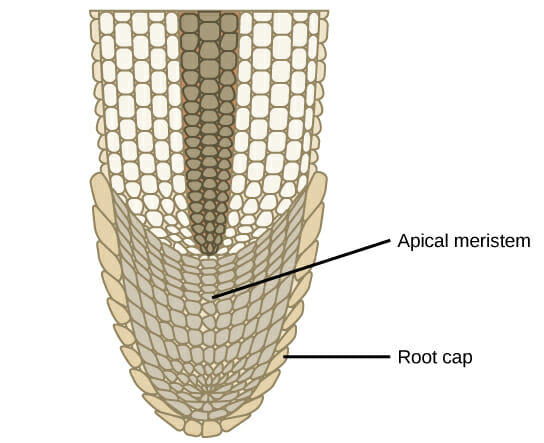
Types of Meristematic Tissue: Lateral Meristem
The second type of meristematic tissue is the lateral meristem. This type of tissue is found in the cambium layer of the stem and root and is responsible for secondary growth in plants. Unlike the apical meristem, the cells in the lateral meristem divide laterally, giving rise to new cells that differentiate into secondary xylem and phloem tissues. This results in an increase in the diameter of the stem and root, which is important for structural support and water transport.
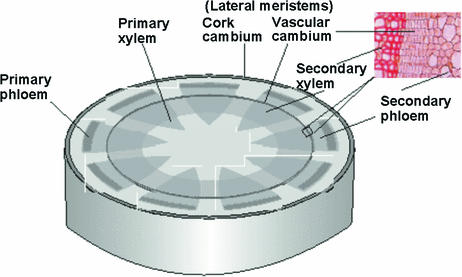
Types of Meristematic Tissue: Intercalary Meristem
The third type of meristematic tissue is the intercalary meristem. This type of tissue is found in the internodes of grasses and is responsible for the elongation of these structures. The cells in the intercalary meristem divide and differentiate, giving rise to new cells that elongate the internodes, allowing the grass to grow taller.
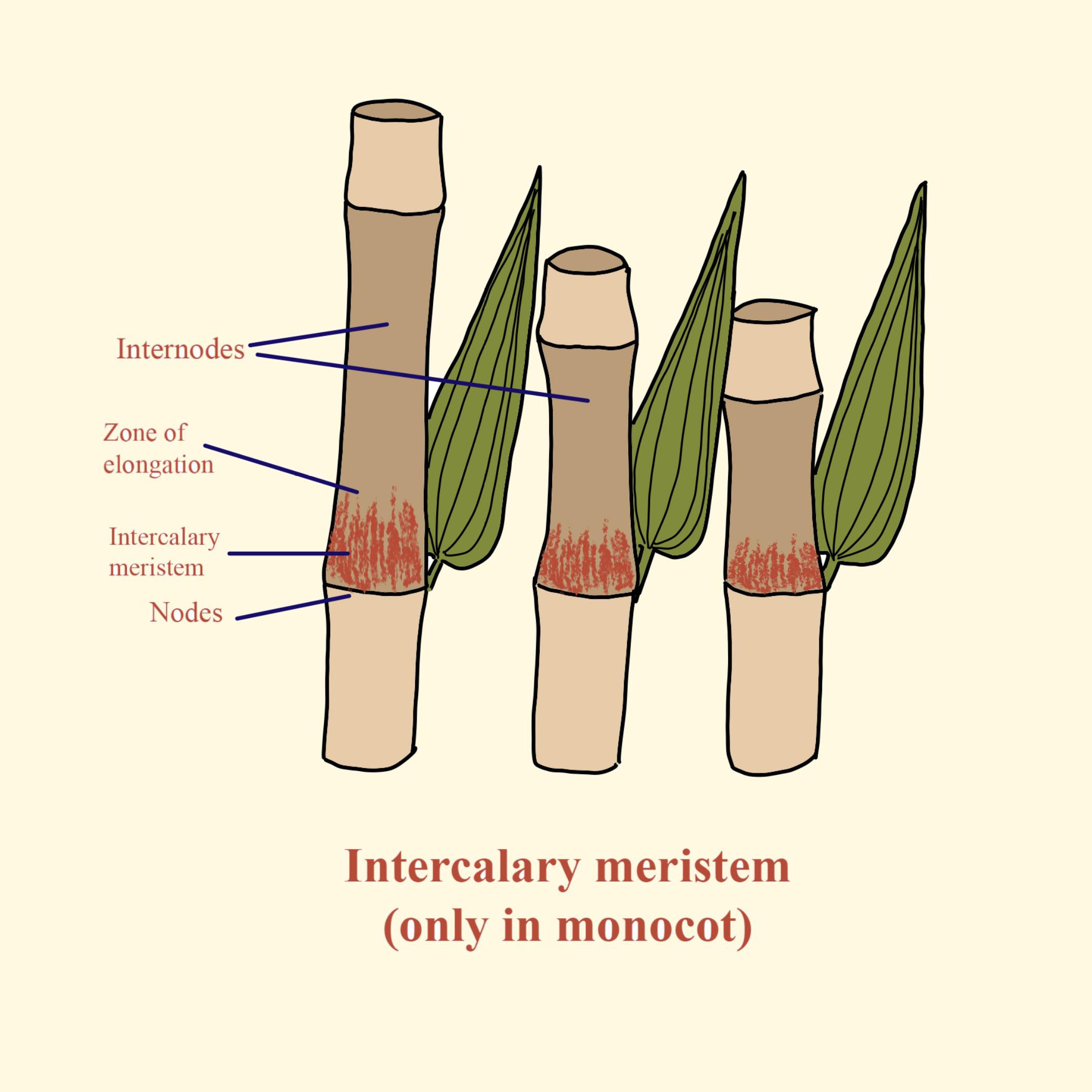
Types of Meristematic Tissue: Floral Meristem
The fourth type of meristematic tissue is the floral meristem. This type of tissue is found in the developing flowers and is responsible for the differentiation of floral organs, such as petals, sepals, and stamens. The cells in the floral meristem divide and differentiate, giving rise to the different types of floral organs, which are essential for sexual reproduction in plants.

Types of Meristematic Tissue: Cork Cambium
Finally, the fifth type of meristematic tissue is the cork cambium. This type of tissue is found in the outer bark of trees and is responsible for the production of cork cells. The cork cambium cells divide and differentiate, giving rise to cork cells that protect the tree from environmental stresses, such as drought, fire, and pests.
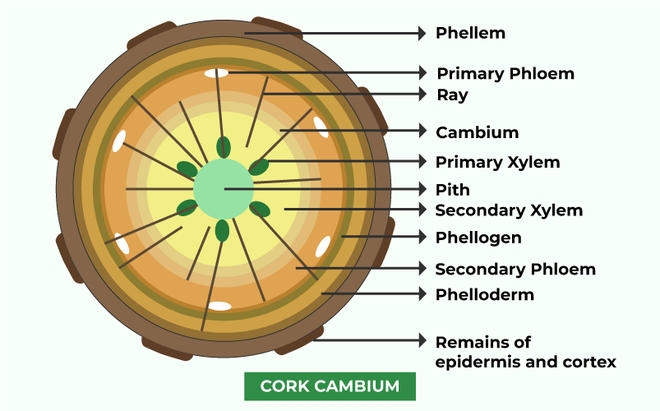
Meristematic Tissue: Characteristics
Meristematic tissue is characterized by small, thin-walled cells that have a large nucleus and small vacuole. These cells are densely packed, and their cytoplasm is rich in organelles such as ribosomes and mitochondria. The cells in this tissue have a high metabolic rate and are constantly dividing.
- Meristematic tissue is unique in that its cells are undifferentiated and have the ability to divide and differentiate into any type of plant tissue.
- This process is controlled by hormones and signals that are produced by the plant itself. For example, the hormone auxin is produced by the apical meristem, and it stimulates cell division and elongation in the stem.
- Other hormones, such as cytokinins, gibberellins, and abscisic acid, also play important roles in regulating cell division and differentiation in meristematic tissue.
- The importance of meristematic tissue in plant growth and development cannot be overstated.
- Without this tissue, plants would not be able to produce new cells or differentiate into the various types of tissue that are necessary for their survival.
- Meristematic tissue is also responsible for the repair and regeneration of damaged plant tissue, allowing plants to recover from injuries and adapt to changing environmental conditions.
Meristematic Tissue: Location
Meristematic tissue is found at the tips of roots, stems, and branches, as well as in the buds of plants. These areas are known as the apical meristem (found at the tips of roots and shoots) and the lateral meristem (found in the cambium layer of the stem). The apical meristem is responsible for the primary growth of the plant, while the lateral meristem is responsible for secondary growth.
Meristematic Tissue: Function
The main function of meristematic tissue is to generate new cells for growth and development. The undifferentiated cells in this tissue divide repeatedly, giving rise to new cells that differentiate into various cell types. These cells are responsible for the development of new organs, such as leaves, stems, and roots.
Meristematic Tissue: Division
The cells in meristematic tissue divide through mitosis. During mitosis, the nucleus of the cell divides into two identical nuclei, and the cell then divides into two identical daughter cells. These daughter cells can then differentiate into various cell types.
Meristematic Tissue: Differentiation
As the cells in meristematic tissue divide, they differentiate into different cell types. The process of differentiation is controlled by various factors such as hormones, environmental factors, and genetic factors. The type of cell that a meristematic cell differentiates into depends on its location in the plant and the signals it receives from its surroundings.
Meristematic Tissue: Importance
Meristematic tissue is essential for plant growth and development. Without this tissue, plants would not be able to grow and develop new organs. This tissue is also important for the regeneration of damaged tissue, as the undifferentiated cells in meristematic tissue can differentiate into the cells needed to repair the damaged tissue.
Meristematic tissue is a critical component of plant growth and development. It allows for the continuous production of new cells and the differentiation of these cells into the various types of plant tissue that are necessary for survival. Through the actions of hormones and signals, meristematic tissue plays a vital role in regulating cell division and differentiation, and it allows plants to adapt to changing environmental conditions.

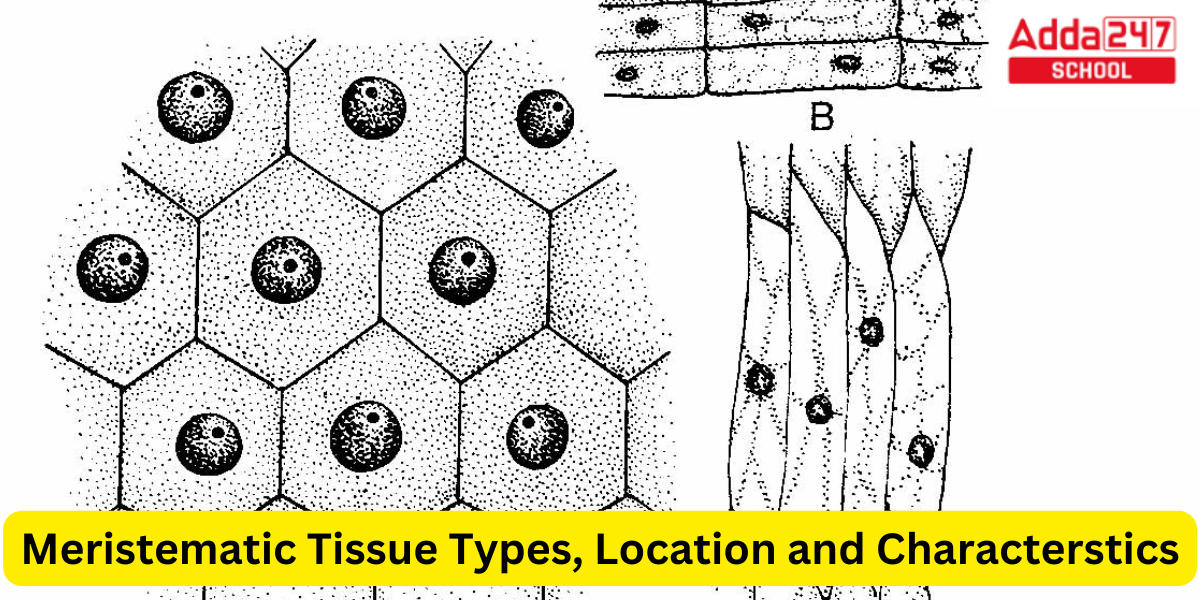







 [Live Updates] NTA CUET Undergraduate Re...
[Live Updates] NTA CUET Undergraduate Re...
 IGNTU CUET Cutoff 2025, Check Category W...
IGNTU CUET Cutoff 2025, Check Category W...
 CGBSE Revaluation Result 2025 Announced ...
CGBSE Revaluation Result 2025 Announced ...









